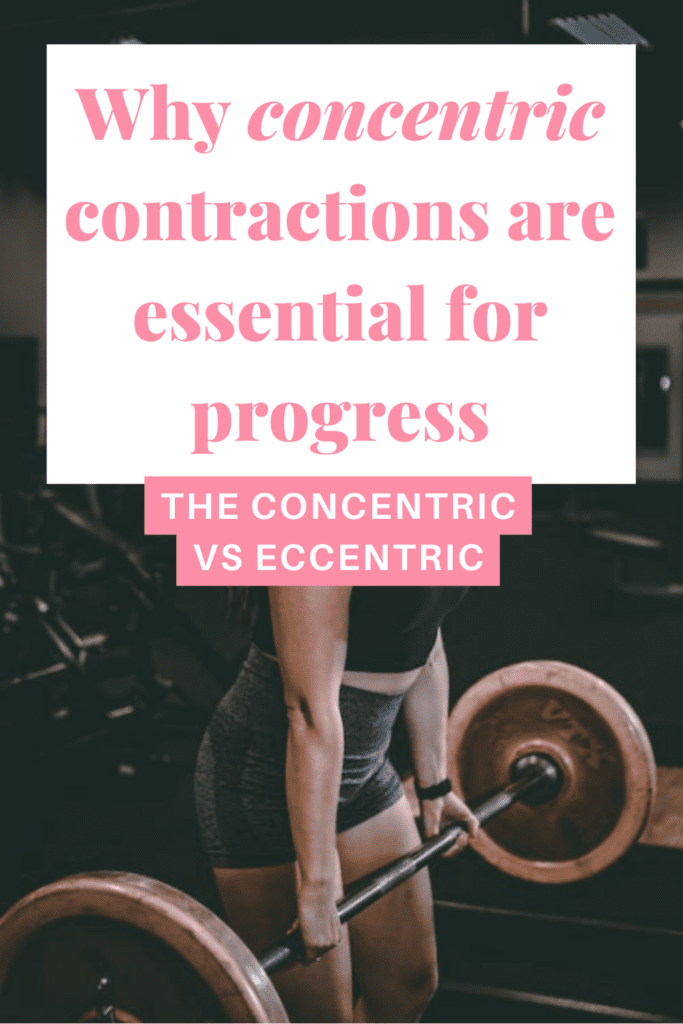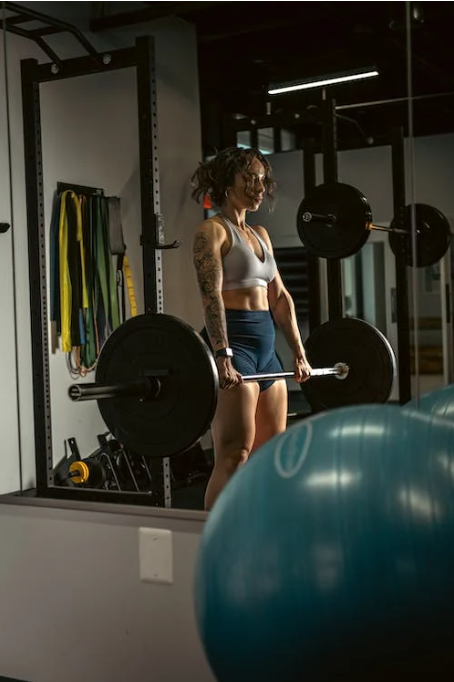I recently wrote a post about the eccentric portion of a movement and how it’s essential to progress in the gym.
However, it’s difficult to understand the eccentric portion without also understanding the concentric portion.
Understanding all the portions of an exercise is essential if you want to maximize progress in the gym.
In this post, I’m going to talk about the concentric portion of an exercise.

What are the three portions of an exercise
No matter what weightlifting exercise you do, there are three major portions to any exercise. Each of these is it’s own separate contraction of the muscle.
These are:
1. The concentric portion: This is when your muscles are contracting and are in the shortened position. Essentially when you’re pushing the weight.
2. The eccentric portion: This is when your muscles are squeezing and stretching. The eccentric portion is when your muscles are in the lengthened position.
3. The isometric portion: This is that small pause at the bottom of your rep after the concentric portion.
Why it’s so important to understand the three different phases
Making sure that you understand each of these phases is crucial if you want to make serious progress in the gym.
This is because it’s very important for you to understand what’s happening during each movement that you’re doing.
You’ll need to understand how each movement works in the body and why it works the way it does. Doing this will allow you to be much more aware of the impact an exercise has on your muscles during your workouts.
The more you’re aware of how what you’re doing engages and interacts with your muscles, the better you can plan a workout routine customized to your goals.
What is the concentric phase
The concentric phase of an exercise is the phase when you’re muscles are in the shortened position.
This is usually the pushing phase of the movement. You might not necessarily be pushing the weight up, you could also be pulling or anything else. What I mean by pushing is the part of the exercise that you’re pushing through.
During the concentric phase, your muscles are shortening under a large amount of pressure.
How to recognize the concentric phase
To know you’re performing the concentric phase of an exercise, you can look for a couple different things.
The first thing you’ll want to look for is when you’re pushing through the weight.
For example, if you’re bench pressing, this is when you’re pushing the weight off of your chest. Or, if you’re doing squats, then when you stand up from being crouched down you are pushing the weight up.
Another example of when you’re pushing through the movement but aren’t actually pushing is when you’re doing lat pulldowns. When you pull the bar down, you’re actually pulling, not pushing. However, pulling down is the portion of the exercise that you’re pushing through.
All of these are the concentric portion of theses exercises.
Another way to recognize you’re performing the concentric motion is if your muscles get bigger.
As your muscles shorten and compress, they get smaller. This is because your muscle is still the same length, but it crunches and squeezes up as it fits into a shorter position.
You might notice your muscle pop out a little and look and feel bigger. For example, if you were performing tricep pushdowns, you might notice that when you push down, your tricep bulges out a little more.
The difference between the concentric and eccentric phases

Whereas the concentric portion is when you’re muscle is in the shortened position, the eccentric is when your muscle is in the lengthened position.
During the eccentric portion, you’ll most likely feel a much greater stretch on your muscle. This is because your muscle is lengthening.
However, during the concentric portion, you won’t feel the same stretch and burn on your muscles. Because your muscles are shortening not stretching.
Instead, the concentric will require you to exert more energy in a motion where you’re pushing or pulling the weight.
The eccentric phase is when you’d usually slow down the motion and focus on increasing your time under tension.
Whereas the concentric phase you focus on a quicker motion performed with a burst of energy.
How each of these come into play when training to failure
When training to failure, you’re training until you struggle to complete the last rep of your set. In order to do this, both the concentric and eccentric movement come into play.
However, each of these looks a little different and has a different role as you begin nearing failure.
Let’s begin with the eccentric portion. When training to failure, the eccentric portion is when you’ll want to slow down the movement and focus on time under tension.
The more you slow down this movement, the greater stretch you can get on your muscles while they’re under tension. You’ll be able to feel a much greater burn on your muscles and allow them to become more fatigued.
This will help you reach true failure for this muscle group.
Now, looking at the role of the concentric portion when training to failure, it’s a little different.
The concentric portion is when you’ll be exploding with speed after the eccentric portion of your movement.
This requires more energy than the eccentric so it will cause you to grow closer to failure much quicker.
The concentric portion of the exercise is when you’ll actually know you’ve reached failure. Since the concentric portion is when you’re pushing the rep out and you reach failure when you can’t push another rep.
By the time you reach failure, the eccentric portion will be when you’re struggling to push through one more rep, but can’t complete a final rep with good form.
Why you need to use both the eccentric and the concentric for growth
When it comes down to the concentric and eccentric portions of an exercise, there’s not one that outweighs the other.
Each movement serves it’s own purpose and you can’t do one without the other. Both rely on different positioning of the muscle where each position and motion serves it’s own function in terms of muscle growth.
This is why understanding and being able to properly utilize each one is essential for anyone who lifts weights.
By being able to recognize the motion of your muscle and being knowledgeable of the potential benefits at each separate contraction, you can reach your maximum potential in terms of gains.
Concentrating on each type of contraction during every rep will allow you to have the most swift, fluid reps you can.
You’ll notice how your reps feel more controlled and you feel much more stimulation in your muscles. That’s how you know you’re stimulating growth.
Takeaways
As someone who lifts weights, it’s important to get to a deeper understanding of the movements you’re doing.
By knowing what happens when and how your muscles react during certain movements, you can use this to program workouts that work best for you.
If you start applying to this knowledge to your workout routine, you’ll have much more efficient workouts and notice more progress than ever before.
More posts on women’s weightlifting:
The importance of weightlifting in a gym routine
Progressive overload: what it is and why it’s essential to gain muscle